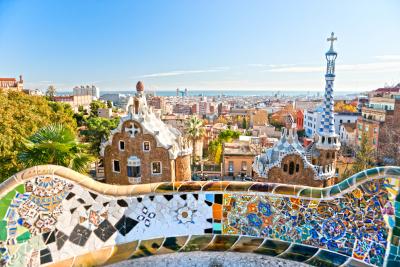The imposing Cathedral of Seville where rest the remains of Christopher Columbus
The City of Seville is some three hours by car from Cordoba. We had, as expected, a beautiful drive. The day was superb. The sun was bright and warm and the sky was speck less and blue. We were all in the best of spirits well pleased with our stay in Cordoba. Seville is actually the capital of the province of Andalusia. It has a population of over seven hundred thousand. It is the only river port of Spain. It too was founded by the Romans some millennia ago. It fell to the Arabs in the year 712 A.D. under whose rule, it flourished and became the capital of the Almoravid dynasty. Seville would be ruled by the Arabs until the middle of the 13th century and the latter’s influence can still be found everywhere in the city like in the decorations on the walls of homes, in the courtyards where flowers and small fountains abound. In 1248, Seville passed onto the Christian Kingdom of Castillo under King Ferdinand III. After the ‘discovery’ of the Americas in 1492, Seville would assume unprecedented prominence. It would become a flourishing economic centre because its port literally held the monopoly of trade and commerce with the outside world. Also, in the year 1519, it would be from the port of Seville that Ferdinand Magellan would set sail on his historic voyage around the world. To-day, Seville is famous for three prized World Heritage Sites: the Alcazar Fortress, the Cathedral de Seville and the General Archives of the Indies.
I was, sure, drawn to Seville because of its beautiful Cathedral, within the confines of which rest the remains of the great navigator, Christopher Columbus. The Cathedral of Seville is a gorgeous and massive structure. It is said that it was built primarily to show off the wealth and influence of Seville as a major trading centre in the fifteenth century. It occupies the site of where once stood the Almodar Mosque, which was demolished by the Spaniards and much of its materials used in the construction of the Cathedral, which was began in 1402 and completed in 1506. However, the beautiful minaret of the mosque, from the top of which the muezzin used to call the Muslims to prayer, was left untouched by the Spaniards. Instead, its top was reworked and fitted with a bell tower and is now known as the Giralda and is reckoned as one of the famous symbols of the Seville.
VISIT TO SPAIN : The Gorgeous City where rest the remains of Christopher Columbus
- Publicité -
EN CONTINU ↻
- Publicité -

